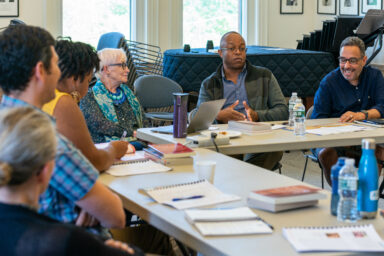During the last two centuries reading has come to refer almost exclusively to the interpretation of written material. In this article Dr. Thomas Wolf uses the etymology of the word “read” and the results of current psychological research to reveal the narrowness of this definition. Wolf reviews the research that has led to a new formulation of the reading process and emphasizes the remarkable similarities that have been found in processes underlying reading and other cognitive capacities: memory, perception, reasoning, and problem-solving.
Wolf argues that by considering the connection between reading and these other processes we enrich our appreciation of reading and allow for the resurrection of the original meaning of reading as a process applicable to a variety of fields. Using the example of developments in woodcut book illustrations, Wolf examines the relations between the process of reading and the history of artistic styles. He concludes that investigators must look beyond the conventional bounds of reading theory—and other theories as well—if serious advances in human knowledge are to occur.




